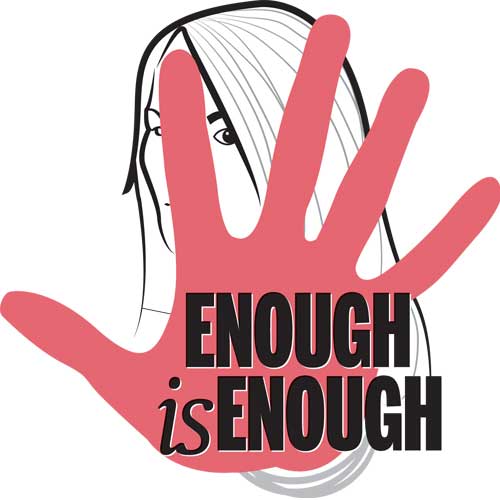Want to prevent sexual harassment and assault? Start by teaching kids

In the wake of sexual assault and harassment allegations involving Harvey Weinstein and Bill O'Reilly, Americans may be learning just how prevalent sexual violence is in our society.
So, what can be done to prevent it?
We have studied how family, school and neighborhood environments influence violent youth behavior. Building from this knowledge, we are working with schools to develop prevention programs.
Here’s what we’ve learned.
Reducing the risks
Decreasing sexual violence means investing in prevention programs that address the causes of sexually abusive behavior. The majority of prevention programs aimed at teens and young adults often focus on teaching girls and women how to decrease their risk of being assaulted, with strategies such as watching out for each other at parties or being aware of their surroundings. Some include self-defense strategies.
Programs like these are generally found to be ineffective because they fail to address the realities that most assaults are committed by someone known and trusted. Harassment is commonly committed by someone in power, such as a teacher or supervisor. These types of programs may be able to reduce some risks, but real prevention needs to focus on the only person who can actually prevent harassment: the potential perpetrator.
It’s everyone’s problem
Increasingly, programs address this shortcoming by encouraging bystanders to challenge harassing behavior and jokes to help promote healthy, positive norms. For example, programs like Green Dot and Bringing in the Bystander help teach high school and college students to step in to prevent violence or help someone who has been assaulted. In 2014, President Obama and Vice President Biden launched the It’s On Us campaign to encourage bystanders to get involved. It provided real actions for college students to help protect their friends and neighbors, such as intervening when someone is harassing another person, providing support to someone who has been victimized or refusing to laugh at hurtful jokes or comments.
However, programs such as these face an uphill battle. Youth are exposed daily to the pervasive and nearly invisible ways that our society accepts and even condones sexually abusive behavior.
For example, as toddlers and preschoolers, young children are taught to ignore their personal boundaries of their bodies. Parents might pressure their children to hug a family member when they don’t want to. Instead, family members should teach children to talk honestly and assertively about how they do or do not want to be touched.
Fathers commonly joke about protecting our daughters from predatory boys who want to date them, because “we know how boys are.” This teaches both sons and daughters that boys are mindless aggressors and girls are helpless victims.
Parents are an important part of teaching positive attitudes and skills for healthy relationships, but few programs exist to teach them how to talk about these difficult subjects.
What about men?
Some programs, such as Coaching Boys into Men, seek to engage men to see sexual violence as more than a “women’s problem” and understand their role preventing violence. Programs for men build on bystander interventions and encourage youth to challenge traditional expectations of masculinity that accept, or even promote, violence. As men’s perception that they are not masculine enough has been associated with increased rates of sexual violence, it is essential to provide role models of nonviolent masculinity.
However, prevention programs cannot ignore that 23 percent of boys and men experience sexual violence or harassment over their lifetime. Although rates of being raped or sexually assaulted are lower for men, males report experiencing sexual coercion, in which they are pressured or manipulated into sexual activity they don’t want, at rates that are nearly equal to women.
What’s next?
Prevention needs to begin in early childhood and continue for life. Teaching skills to prevent violence starts with learning empathy for others, communication skills and problem solving. It involves promoting healthy sexual behavior through sex education focused on respect for self and others, communication and consent. Programs that empower youth to make positive changes in their communities show promise for preventing sexual violence.
School boards, employers and politicians have the power to strengthen and consistently apply policies to keep schools, workplaces and communities safe by holding abusers accountable for their actions. Leaders, and all bystanders, can refuse to hide or tolerate abusive behavior. Lastly, we can support services for both male and female victims that reduce the harm of these traumatic experiences.
The ConversationSexual abuse is not just a “women’s issue.” Men and women play a significant role in prevention. Acknowledging sexual assault as a community-wide problem that impacts all persons regardless of gender is vital to preventing sexual assault.
Article Source: http://www.13newsnow.com/news/nation-now/want-to-prevent-sexual-harassment-and-assault-start-by-teaching-kids/487326428
Image Source: http://www.soundgirls.org/wp-content/uploads/2015/10/enough-is-enough.jpg?w=300
VOCABULARY WORDS:
1. Prevalent (adj.) ~ widespread in a particular area at a particular time
2. Perpetrator (n.) ~ a person who carries out a harmful, illegal, or immoral act
3. Intervene (v.) ~ come between so as to prevent or alter a result or course of events
4. Pervasive (adj.) ~ (especially of an unwelcome influence or physical effect) spreading widely throughout an area or a group of people
5. Condone (v.) ~ accept and allow (behavior that is considered morally wrong or offensive) to continue
6. Coercion (n.) ~ the practice of persuading someone to do something by using force or threats
QUESTIONS FOR DISCUSSION:
1. Do you agree that the people's behavior in terms of sexual assault is rooted from childhood? Discuss your opinion
2. What is personal boundary? Why is it important to teach children the importance of it?
3. What is 'victim blaming'? What is the psychology behind it?
4. What is the best way to prevent sexual assault?